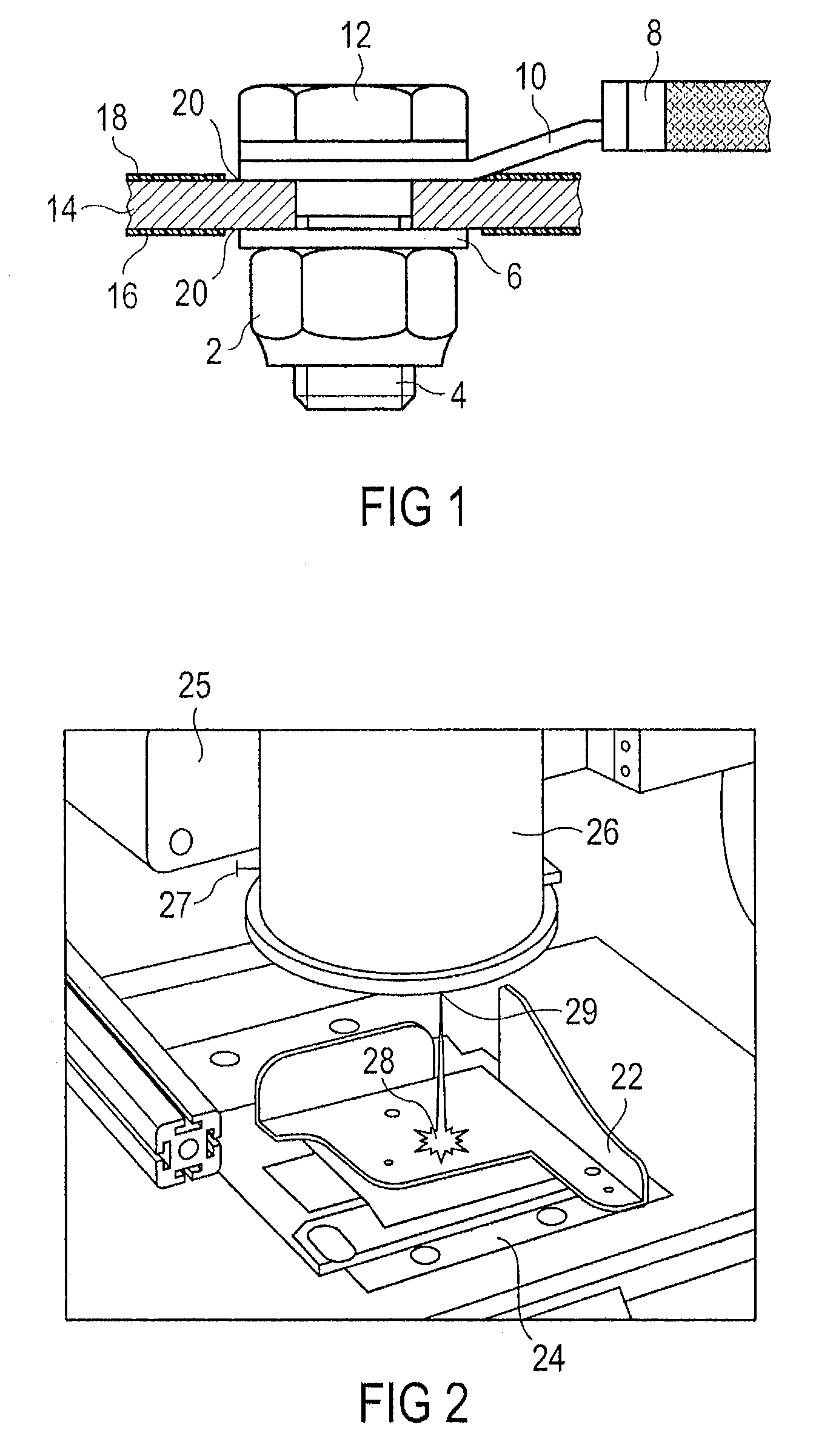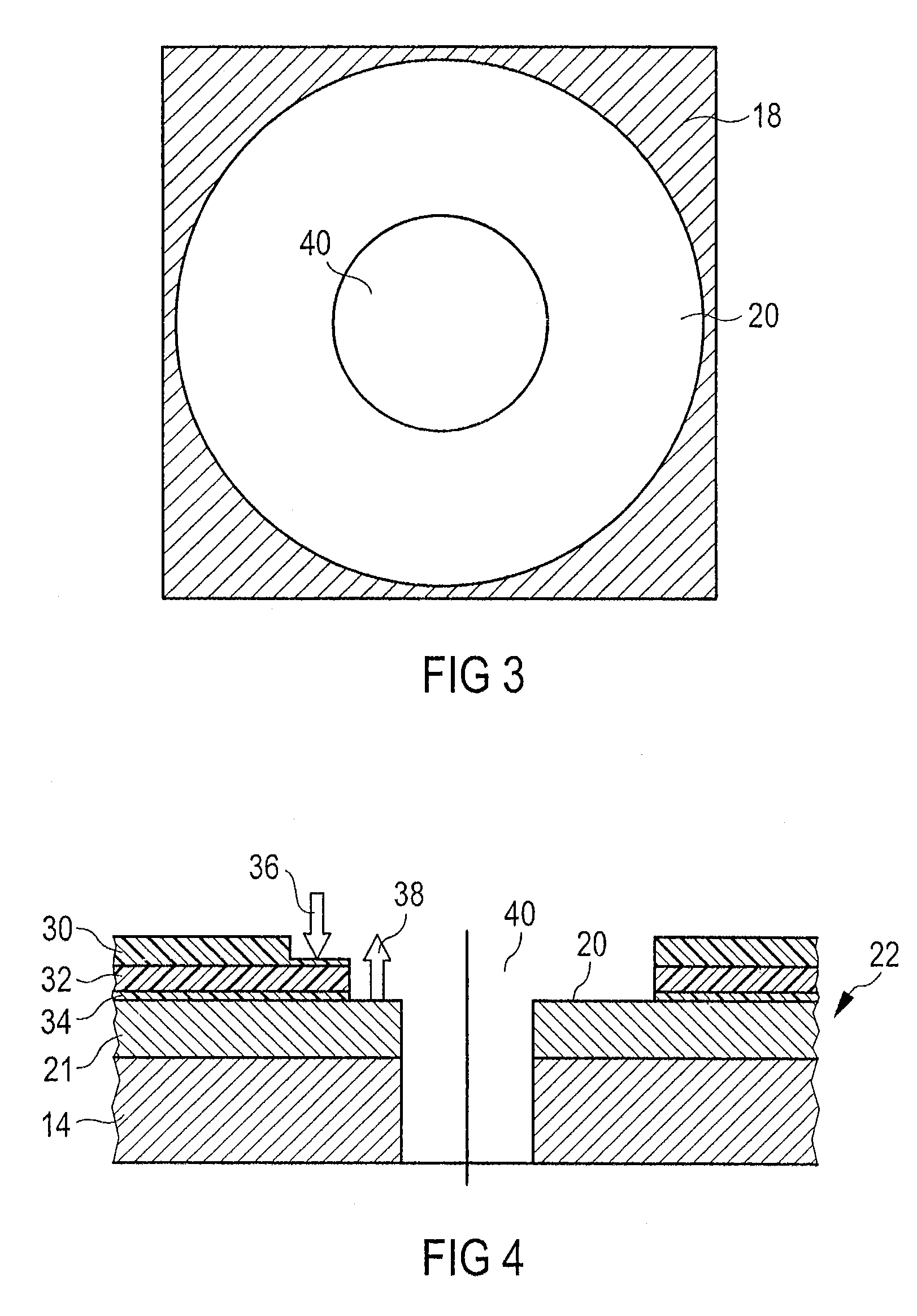Laser-assisted coating removal method
a laser beam and coating technology, applied in the direction of chemistry apparatus and processes, manufacturing tools, welding/soldering/cutting articles, etc., can solve the problems of reducing the quality, quantity of material removed, time-consuming and labor-intensive remediation, etc., to facilitate the precise positioning of the laser beam and increase the treatment outlay
- Summary
- Abstract
- Description
- Claims
- Application Information
AI Technical Summary
Benefits of technology
Problems solved by technology
Method used
Image
Examples
Embodiment Construction
[0029]FIG. 1 is a diagrammatic sketch of a chassis terminal surface connected with an electrical cable. The figure shows a conductive basic material 14, which can be plated or unplated. Structural elements comprised of a conductive basic material 14, e.g., an aluminum alloy like Al 2024, are often used in aircraft construction. A non-conductive surface protection system 18 is applied to this conductive basic material 14. This non-conductive surface protection system 18 protects the basic material 14 against outside influences, e.g., in order to impede corrosion. The non-conductive surface protection system 18 can be composed of an anodized layer based on chromic acid or sulfuric acid, of primer and topcoat paint, wherein it is not necessary that all layers be used at the same time, or any other system known in the art.
[0030]FIG. 1 shows an example for the chassis terminal of part of an airplane. The conductive surface 20 of the part is connected by a connecting cable 8 and terminal ...
PUM
| Property | Measurement | Unit |
|---|---|---|
| power | aaaaa | aaaaa |
| power | aaaaa | aaaaa |
| power | aaaaa | aaaaa |
Abstract
Description
Claims
Application Information
 Login to View More
Login to View More - R&D
- Intellectual Property
- Life Sciences
- Materials
- Tech Scout
- Unparalleled Data Quality
- Higher Quality Content
- 60% Fewer Hallucinations
Browse by: Latest US Patents, China's latest patents, Technical Efficacy Thesaurus, Application Domain, Technology Topic, Popular Technical Reports.
© 2025 PatSnap. All rights reserved.Legal|Privacy policy|Modern Slavery Act Transparency Statement|Sitemap|About US| Contact US: help@patsnap.com



